Muscles is a 35-foot-high skyscraper designed to change posture thanks to a jointed spine and pneumatic muscles, designed by the WhoWhatWhenAir skyscraper team: Philippe Block, Axel Kilian, Peter Schmitt, and John Snavely.
The goal was to design a “smart” structure that responds to the people interacting with it. The project was inspired by structural engineer Guy Nordenson‘s idea of responsive structures for buildings. He said, “If architects designed a building like a body, it would have a system of bones and muscles and tendons and a brain that knows how to respond. If a building could change its posture, tighten its muscles and brace itself against the wind, its structural mass could literally be cut in half.”
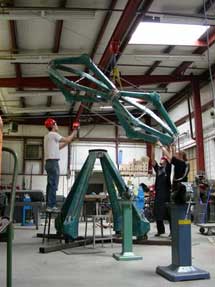
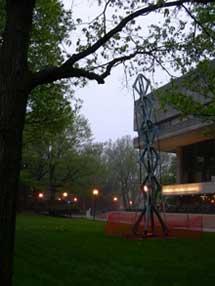
The Muscles tower is an articulated jointed spine controlled by a series of pneumatic muscles. Activating the pumps allows the structure to bend in different directions by introducing a twist in the jointed core. By stacking and activating several “muscle” units, the mini skyscraper can gently curve in space away from its upright equilibrium position. If no muscles are active, the core keeps the structure upright.
The team imagines that, in a full-scale tower, such active structural components would be used to cancel out movement and stabilize the tall structure against changing forces from wind or earthquakes.
The tower, a winner of the Mini skyscraper competition, will be on view at MIT through May 21. Via MIT news office.
The story made me think of Kas Oosterhuis wonderful work at the Hyperbody research group in Delft.
I previously mentioned two of their projects: MuscleBody, an interior space that change its shape, its degrees of transparency and the sound that it generates according to the behaviour of the people that have entered the structure; and Bamboostic a forest of mechanised bambo trees controlled by the movements of a little red fish.
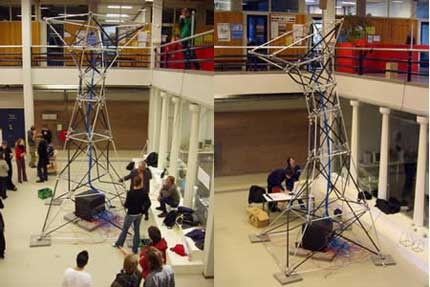
The Hyperbody research group developed two years ago MUSCLE Tower II (image above), a tower that reacts to its environment, and pro-actively determines the space around itself. (video)
The HRG have also worked on the design of an interactive hotel room. The Muscle Room would allow the user to alter his surroundings to suit his every needs. When the room is entered it is completely empty. By interacting with the room the user can get a different layout or appearance. Using a system of moving panels, the walls could be shaped into furniture, doors, spaces. Also the appearance, light, sound and climate can be influenced to create the perfect room.
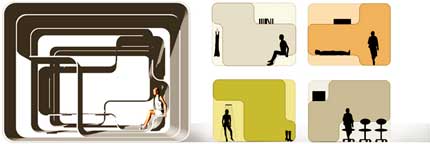
In March, i attended the lecture that Kas Oosterhuis at the Delft – Game, Set and Match II conference. He mentioned several of his projects such as the WEB of North-Holland, and the iWeb, based on the principles of Swarm Behavior (image below, on the right); the E-motive House, a programmable and demountable structure that would change shape in real time; the Flyotel, a hotel in Dubai that would celebrates the pleasure of flying, The Acoustic Barrier and the Hessing Cockpit in Utrecht that combine a 1.5km long acoustic barrier with an industrial building of 5000m2. The concept is to design with the speed of passing traffic since the building is seen from the perspective of the driver. Using a process he calls “mass customisation”, each piece of glass, steel, each node in the structure is slightly different that the others.
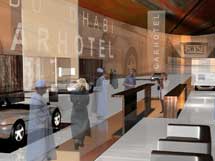
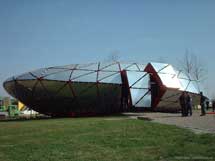
I was particularly impressed by the ambition of his Masterplan for the Automotive Complex (image above, on the left) that will cover a site of more then 6 km2 at Abu Dhabi and host 300 car dealers, but also car parts shops and garages, a car museum, styling centre, design academy, children car track, hotel, conference centre, a residential zone and offices.
See also: the Interactive Architecture blog and Peter Yeadon’s Transgenic Zoo, an ongoing case study which explores the architectural implications of nanotechnology and nanobiotechnology.
